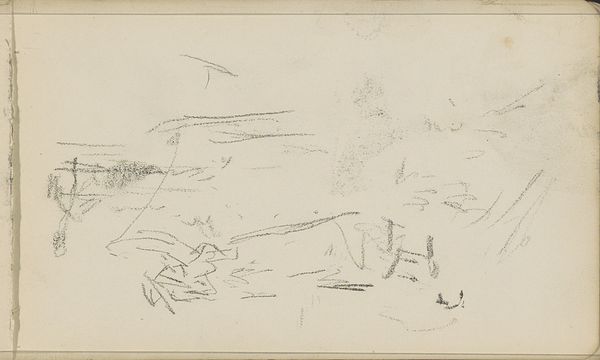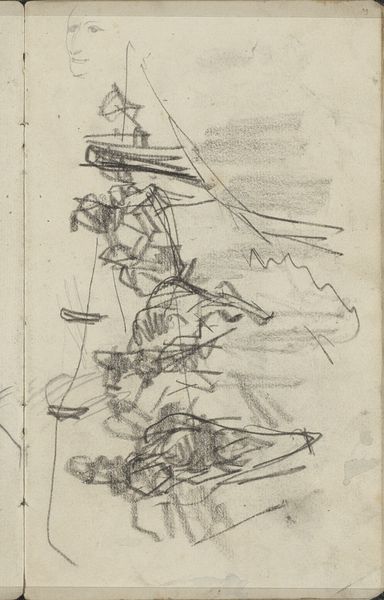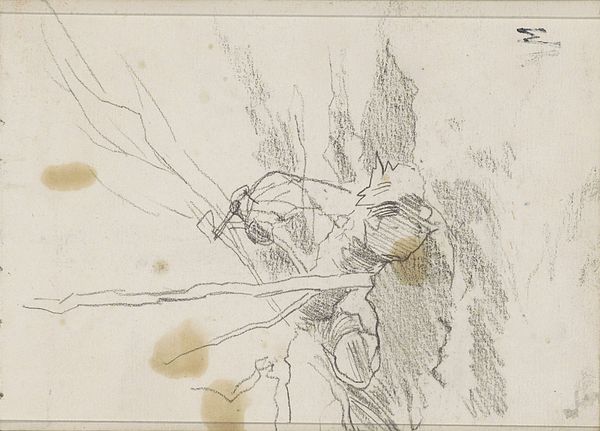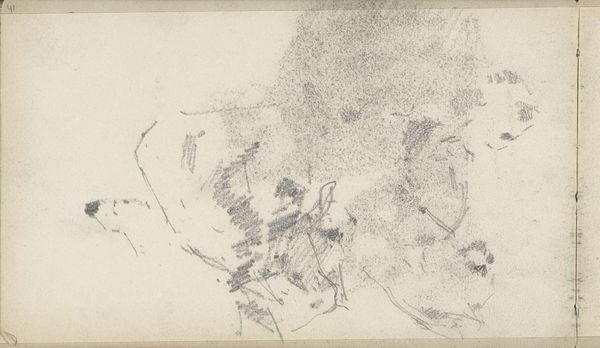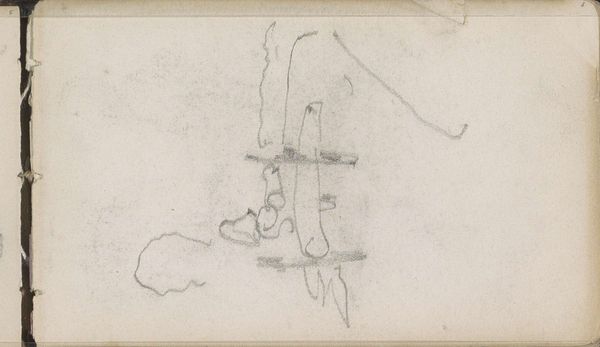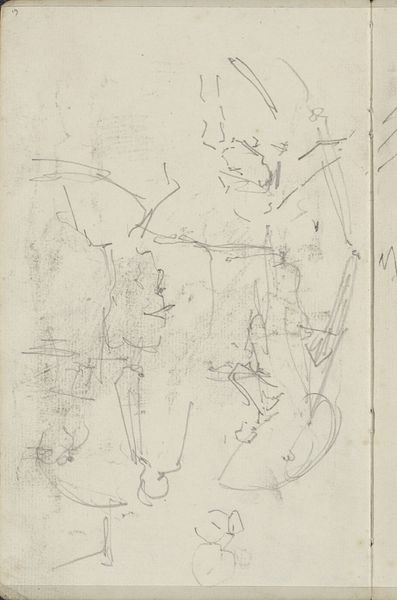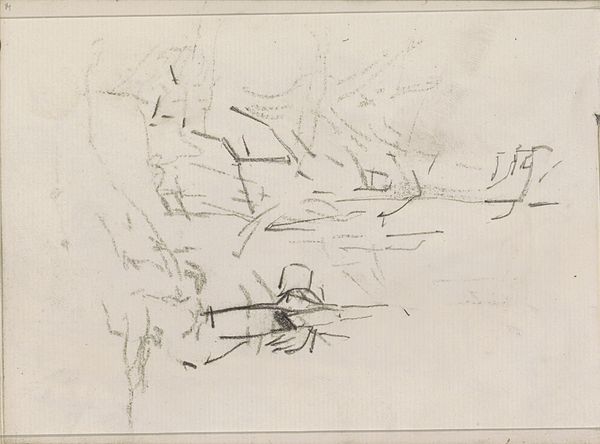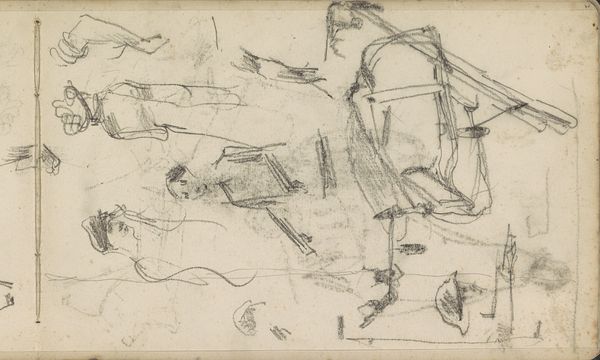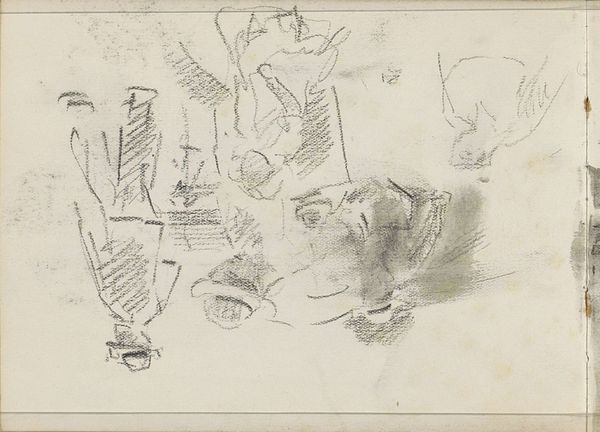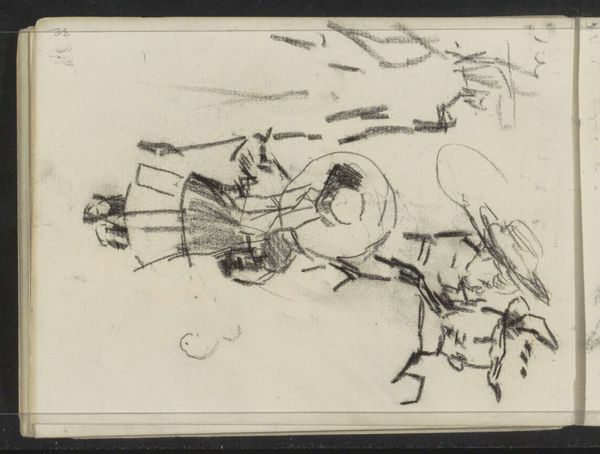
drawing, pencil
#
drawing
#
dog
#
figuration
#
pencil
#
realism
Copyright: Rijks Museum: Open Domain
Curator: This drawing by George Hendrik Breitner, dating from 1880 to 1882, is titled "Achterlijf van een hond en een meisje met hoed" which translates to "Hindquarters of a dog and a girl with hat." Executed in pencil, it’s part of the Rijksmuseum’s collection. What are your initial impressions? Editor: My first thought is of fleeting, liminal states—the half-formed sketch seems to capture a moment only half-grasped. It feels intimate, like glimpsing someone’s private reflections, almost voyeuristic in its incompleteness. What does it evoke for you? Curator: I’m drawn to the odd juxtaposition, the truncated dog and girl placed on the page so dynamically. It lacks formal detail, yet conveys a strange sense of both movement and stillness. The pencil work is delicate, a series of hesitant, exploratory marks. There are many cultural readings that spring to mind as well. Editor: Absolutely. This isn’t a posed portrait; it’s raw observation. Consider how working-class women are rarely offered such vulnerability without social critique or sentimental gloss. We see her only through impression. What about the figure of the dog – for so many people and families it represents something special, maybe something to note as we work to understand a broader history of that kind of sentimental figuration at this moment. Curator: Dogs as faithful companions—symbols of loyalty and domestic life. By focusing on its rear end, however, Breitner undercuts traditional symbolism and instead provides the dog's relationship with the young girl as just a daily occurance. His decision offers us something more realistic than romantic. The unfinished quality invites multiple interpretations, freeing the artwork from fixed meanings. Editor: Yes! And Breitner often depicted working-class Amsterdam—the grit and bustle. Knowing his context, does the work subtly highlight the unvarnished reality of urban life for women? There is still so much visual language, of dogs and girls in hats, today. Why is that? And how did Breitner help pave the road to it? It feels important that, still, girls, women, femmes, and marginalized genders who wore those items—are always trying to be "heard." The hat in particular serves an important double duty – a visual, but not so visual, announcement that women are here. And a protective device when, like in a gritty urban atmosphere like he's capturing, they need to have as little contact or view as possible to get by and survive another day. It’s there, present as armor. The fact that both entities here are “moving” and caught “en route” I think helps underscore all of that, especially if there were other drawings with the dog from his sketchbook. It says, women are still in motion – here! Now! The girl's gaze must be imagined but Breitner sees her as actively creating and surviving her landscape. What is the image asking from the viewer? Curator: A call to notice, to acknowledge the ordinary made extraordinary. To linger in that momentary state between sketch and completed thought, maybe, because the pencil and graphite drawings like this is a document. And like you mention, maybe he did include multiple views and the intention was really just documenting that motion from various perspectives over time in different parts of the city. I think there is even something quite comforting in remembering and seeing it this way, especially here within this particular collection in the Rijksmuseum where there is always more that the viewer may not know about and the artists' own experience with artmaking itself.
Comments
No comments
Be the first to comment and join the conversation on the ultimate creative platform.
